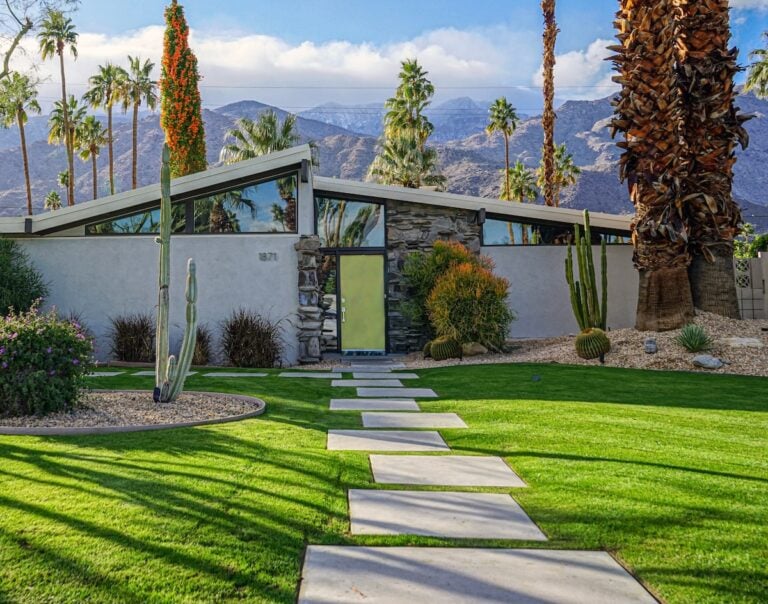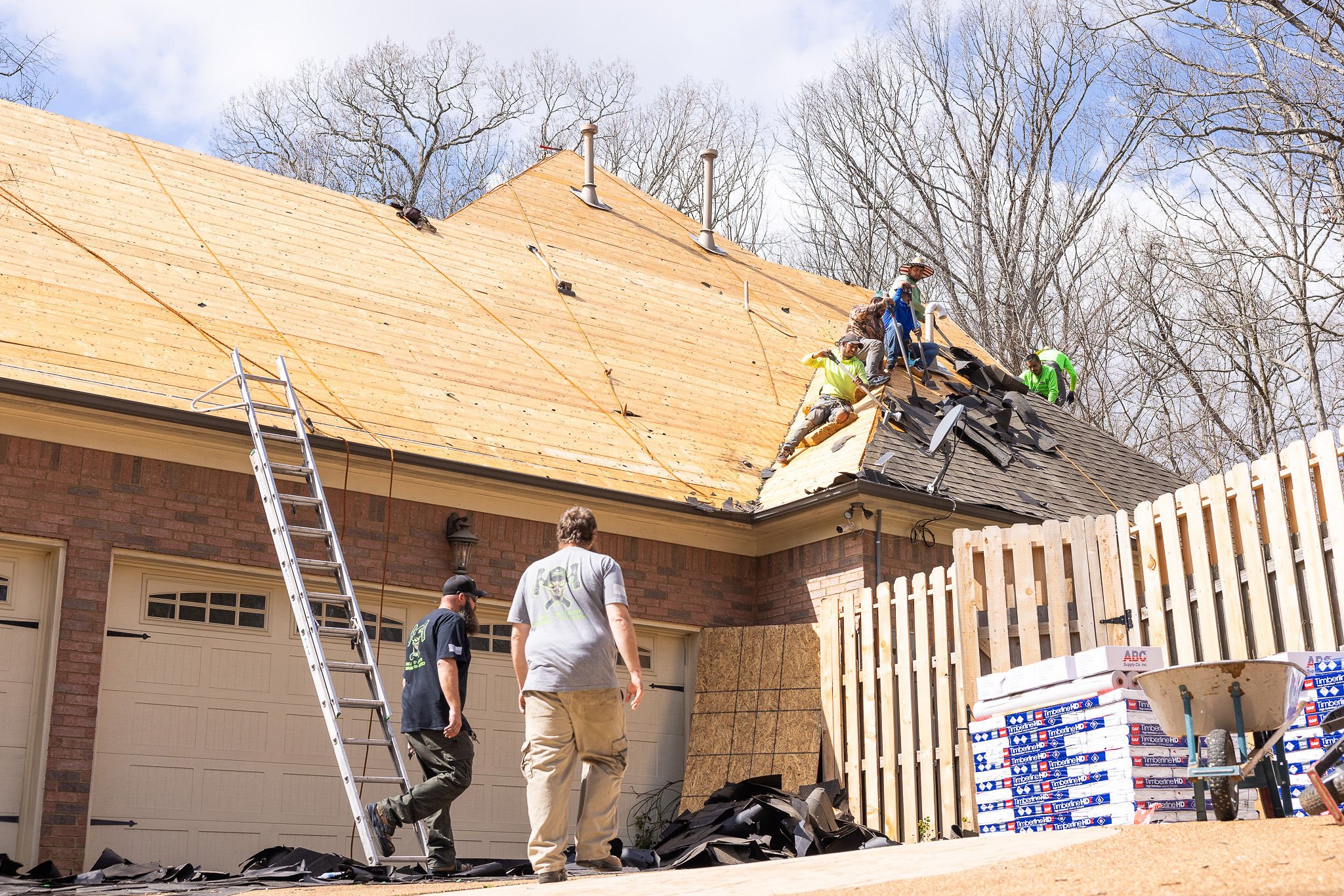Choosing a new roof is a significant decision for any homeowner. Beyond just protection from the elements, a roof plays a crucial role in your home’s aesthetic appeal, energy efficiency, and overall value. For those interested in a distinctive look, a butterfly roof offers a unique blend of modern style and practical benefits. If you’re exploring different roofing options, understanding this design is a great place to start.
A butterfly roof is an inverted gable roof, resembling a butterfly’s wings in flight. The two surfaces slope inwards towards a central valley, creating a dramatic V-shape. This design became popular during the mid-century modern architectural movement and continues to capture attention today for its bold, forward-thinking appearance.
This guide will walk you through the key aspects of a butterfly roof. We’ll cover:
- Why the butterfly roof is a noteworthy choice for modern homes.
- The main advantages and disadvantages of this unique design.
- Important factors to consider before installation.
🦋 Why a Butterfly Roof Is a Great Choice
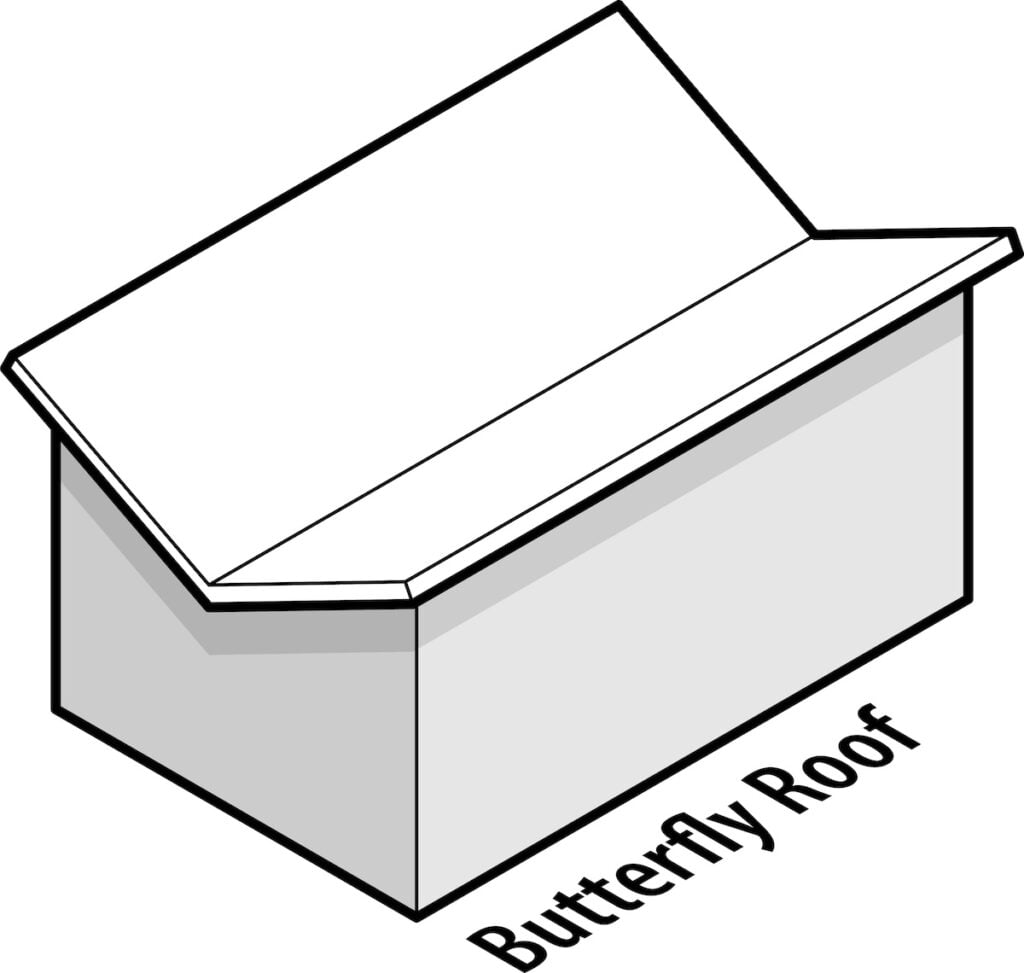
A butterfly roof does more than just make a visual statement; it offers practical advantages that can enhance your living space and even contribute to a more sustainable home. Its unconventional shape is thoughtfully designed to improve your home’s environment.
The design allows for larger windows, or clerestory windows, to be installed along the upper walls. This feature floods interior spaces with natural light, making rooms feel larger and more open while potentially reducing the need for artificial lighting during the day. Furthermore, the central valley is perfectly suited for rainwater collection, an eco-friendly feature that appeals to environmentally conscious homeowners.
Here are some of the key benefits:
- Exceptional Natural Light: The elevated outer edges allow for taller walls and larger windows, maximizing daylight.
- Eco-Friendly Water Collection: The central valley simplifies rainwater harvesting for gardening or other household uses.
- Striking Aesthetic: Its unique V-shape provides a distinctive, modern look that stands out.
- Improved Ventilation: The design can promote natural airflow, helping to keep your home cool.
🏡 5 Key Considerations for a Butterfly Roof
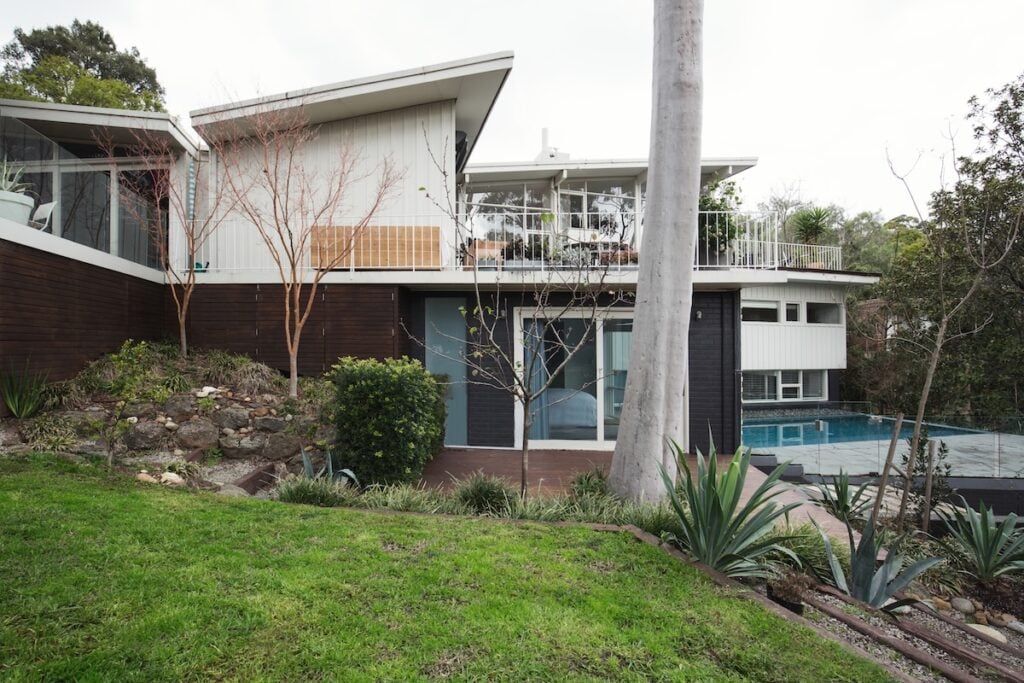
Thinking about a butterfly roof for your home? It’s a fantastic choice that blends eye-catching design with smart functionality. Before you move forward, it’s important to understand the specific details that come with this style.
Here are five key points to consider when planning for a butterfly roof.
1. Structural Requirements and Costs
A butterfly roof has unique structural demands compared to traditional roof types. The inverted slope and central valley require a robust support system to handle weight, especially from collected rainwater or snow.
- Engineering Needs: You will likely need a structural engineer to design the roof’s framework to ensure it is safe and durable.
- Higher Initial Cost: The complexity of the design and the need for specialized labor often result in higher initial construction costs than a standard gable or hip roof.
2. Superior Drainage is Essential
The biggest challenge with a butterfly roof is managing water drainage effectively. Since water collects in the central valley, a meticulously planned and installed drainage system is non-negotiable to prevent leaks and water damage.
- Valley Drainage: A high-quality, seamless gutter system within the central valley is crucial. It must be properly sized and sloped to handle heavy rainfall.
- Regular Maintenance: The drainage system will require regular cleaning and inspection to ensure it remains free of debris like leaves and twigs that can cause blockages.
3. Material Selection Matters
The materials you choose will impact both the look and longevity of your butterfly roof. While many standard roofing materials can be used, some are better suited for the low slopes and drainage challenges of this design.
- Standing Seam Metal: This is a popular and highly effective choice. The interlocking panels provide excellent water resistance and a sleek, modern finish that complements the roof’s style.
- Membrane Roofing: Materials like EPDM or TPO are also great options, as they create a seamless, waterproof barrier that is ideal for the central valley.
4. Maximizing Natural Light and Ventilation
One of the most celebrated features of a butterfly roof is its ability to welcome natural light. The upward-sloping rooflines create space for large glass panes that can transform your home’s interior.
- Clerestory Windows: Plan for the installation of clerestory windows along the high points of the roofline. This will fill your home with light without sacrificing privacy.
- Operable Windows: Consider including operable windows to take advantage of natural ventilation, which can help cool your home and reduce energy costs.
5. Finding the Right Contractor
Installing a butterfly roof is a specialized task. It’s not a project for a general roofer; you need a contractor with proven experience in this specific architectural style.
- Seek Specialists: Look for roofing professionals who have a portfolio that includes butterfly roofs or similar modern, complex designs.
- Check References: Ask for references from past clients who had a butterfly roof installed. This will give you confidence in their ability to handle the project’s unique demands.
💧 Waterproofing and Maintenance
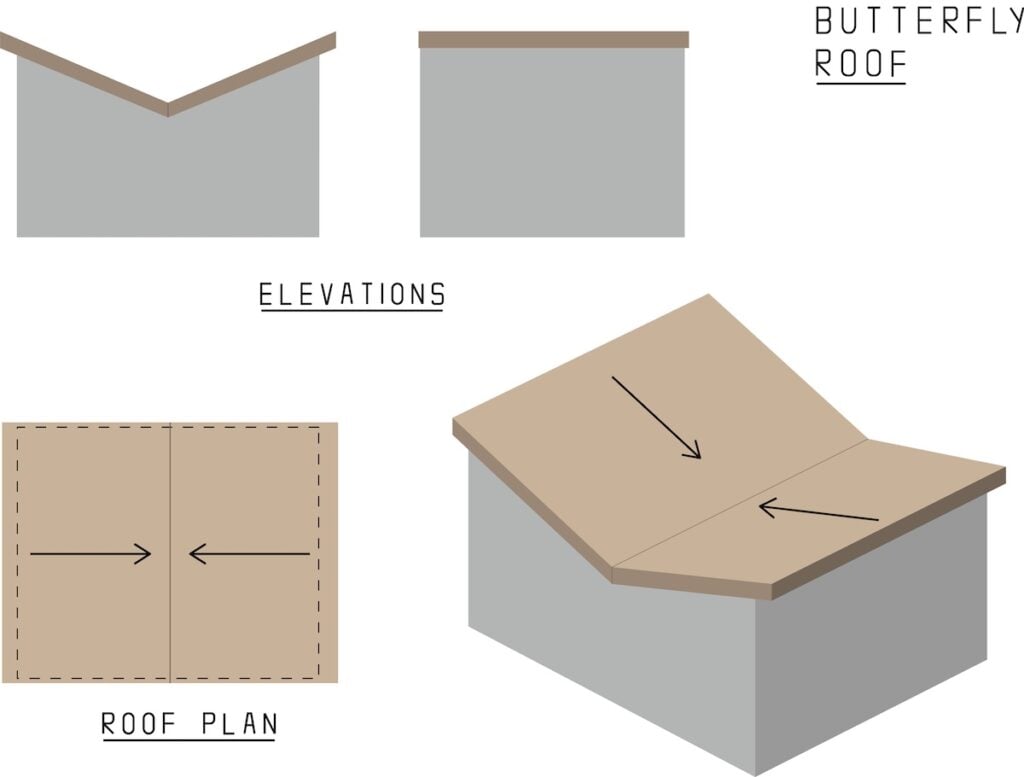
Proper waterproofing and a consistent maintenance schedule are critical to the long-term success of a butterfly roof. Given its unique design where water is channeled toward the center of the structure, any failure in the waterproofing system can lead to significant problems.
Taking proactive steps will ensure your roof remains a stunning and functional feature of your home for years to come.
- High-Quality Waterproofing Membranes: During construction, a heavy-duty, continuous waterproofing membrane should be installed in the central valley before the final roofing material is applied. This provides a crucial secondary layer of protection against water intrusion.
- Seamless Flashing: All joints, especially where the roof meets walls or around any penetrations like vents, must be expertly flashed. Using seamless flashing techniques can further reduce the risk of leaks in these vulnerable areas.
- Scheduled Inspections: Plan for professional roof inspections at least twice a year—once in the spring and once in the fall. An expert can identify and address minor issues before they become major repairs.
- Debris Removal: Regularly clear the central valley and drainage system of leaves, branches, and other debris. Blockages are the most common cause of water overflow and leaks in a butterfly roof system.
✨ Ready to Elevate Your Home’s Style?
A butterfly roof is a bold architectural choice that offers a perfect blend of modern aesthetics and practical benefits. From enhancing natural light to providing an opportunity for sustainable living through rainwater collection, it’s a design that can truly transform a home.
While it requires careful planning, specialized installation, and diligent maintenance, the result is a stunning and unique feature that adds significant value and character. If you’re ready to explore a roofing option that stands out from the rest, the butterfly roof is an excellent contender.
Are you considering a butterfly roof for your home in Tennessee, Arkansas, or Mississippi? Contact Summit Roofing & Restoration today! Our experienced team has the expertise to bring your vision to life and ensure your new roof is both beautiful and built to last.
